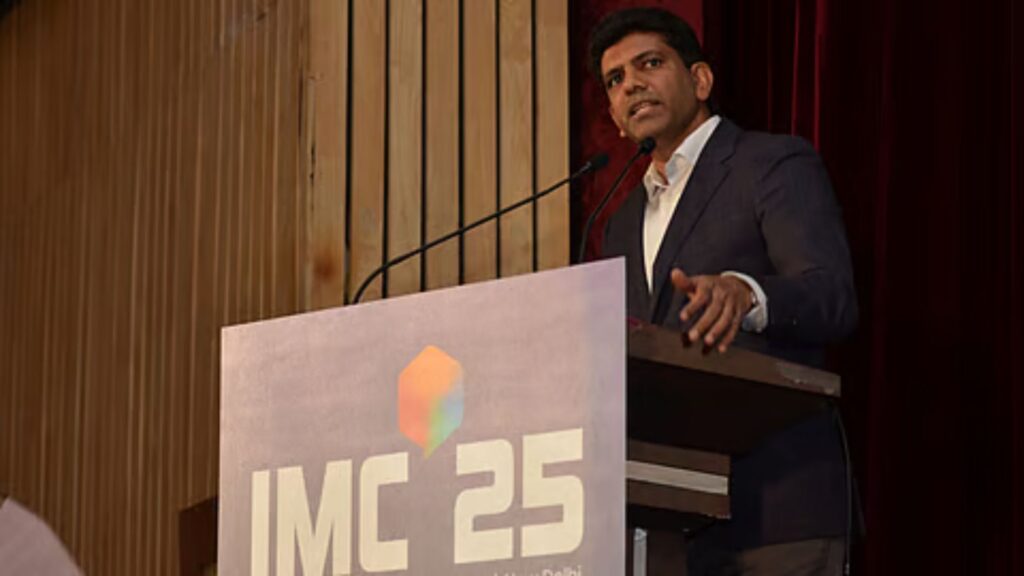
Minister of State for Communications, Chandra Sekhar Pemmasani, has clarified that India’s current telecom market structure—largely dominated by Reliance Jio and Bharti Airtel—is not a result of government policy, but rather a reflection of capital-driven market dynamics. Speaking at the India Mobile Congress (IMC) 2025 roadshow in Bengaluru, Pemmasani emphasized that the high capital expenditure required in the telecom sector has naturally limited the number of successful players.
“The duopoly has not been intentionally created. Telecom demands huge investments, and Jio and Airtel have been able to deploy capital efficiently. Their investments have enabled India to achieve the fastest 5G rollout in the world,” Pemmasani told CNBC-TV18.
However, he underlined the government’s stance that India needs more competition in the telecom sector. “Ideally, we should have four to five operators. To that end, the government converted nearly ₹36,000 crore into equity in Vodafone Idea. Although the company continues to face challenges, the government remains committed to supporting it,” he said.
Pemmasani also reiterated the ongoing efforts to revive state-run Bharat Sanchar Nigam Ltd (BSNL), noting that its revival is part of a larger push to develop indigenous telecom technologies. “BSNL’s turnaround is slower because we are prioritizing homegrown solutions. But eventually, it will emerge as a strong competitor,” he added.
On the future of telecom innovation, Pemmasani highlighted India’s ambitions to be at the forefront of 6G development, in line with global leaders like the US and China. “In earlier generations of telecom—2G, 3G, 4G, and even 5G—India had limited influence on standard-setting. But with 6G, we have already contributed about 10% to global standards and filed over 200 patents,” he noted.
The minister also showcased the country’s growing digital infrastructure footprint, citing 1.2 billion mobile subscribers, 1 billion broadband users, and more than 2.2 lakh villages connected through the BharatNet initiative.
“Through BharatNet, we are bridging the rural-urban digital divide. An additional $18 billion is being invested to connect 40,000 gram panchayats and 1.5 crore rural households with high-speed internet,” Pemmasani said. He also highlighted India’s shift from being a net importer to a major exporter of mobile devices, with annual exports now touching ₹1.8 trillion.
The minister further spoke about the role of emerging technologies like artificial intelligence (AI) in the telecom sector. “AI is both an enabler and a disruptor. It can be used to commit fraud, but also to prevent it. For instance, telecom has developed a fraud risk indicator to proactively identify and mitigate threats,” he said.
He added that as technologies evolve, regulatory frameworks will be adapted accordingly. The Telecom Technology Development Fund, according to Pemmasani, has already supported 120 startups with funding worth nearly ₹500 crore. With these initiatives, India is positioning itself as a significant player in global telecom innovation, while continuing to strengthen its domestic digital ecosystem.






